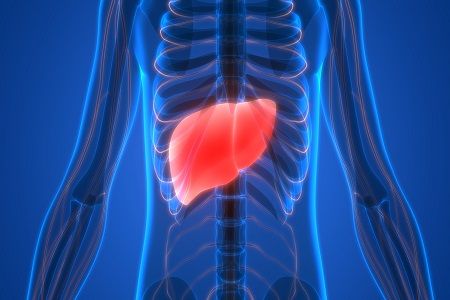Article
Longer Treatment Duration Cures More Patients with Hepatitis C Genotype 2 and Cirrhosis
Author(s):
Increasing the duration of sofosbuvir/ribavirin treatment can cure more patients with hepatitis C genotype 2 with cirrhosis.

Alcoholism is the leading cause of cirrhosis in the United States and chronic hepatitis C is the second—impacting around one out of four patients. Alessandro Mangia, MD, and colleagues from Casa Sollievo della Sofferenza, a hospital in San Giovanni Rotondo, Italy, set out to find how a drug combination worked in patients with hepatitis C genotype 2 and cirrhosis.
In 2013, the US Food and Drug Administration (FDA) approved a 12-week oral regimen of sofosbuvir (Sovaldi/Gilead) and ribavirin (Rebetol/Merck; Copegus/Genentech; Ribasphere/Kadmon Pharmaceutical) to treat hepatitis C genotype 2. Studies have shown that 90% of patients reach sustained virologic response (SVR) for 12 weeks or more with the treatment. However, not so surprisingly, real-life outcomes tend to be lower.
Using an Italian cohort, the team looked at 291 patients with hepatitis C genotype 2 and bridging fibrosis or cirrhosis. Participants were ages 18 to 87, with a median age of 68, and 163 of them were treatment naïve. Of the participants, 168 had cirrhosis and 149 of them had Child-Pugh score A and 19 B (used to assess chronic liver disease and cirrhosis). These patients also had 50 platelets count <100,000/mm3 and 62 albumin <3.5g/dl.
The sofosbuvir/ribavirin treatment is typically prescribed for 12 weeks, but the researchers recommended that these patients up the duration to 16 to 20 weeks.
“We demonstrated that using the recommended extended duration in patients with more severe disease, 95% of patients with severe liver disease, including cirrhosis, can be cured,” said the report.
SVR12 was achieved in 95.53% of patients overall. Further data breakdown showed SVR12 success in 99.15% in non-cirrhotics and 93.06% in cirrhotics. Similar SVR12 rates occurred in cirrhotics whether they were on the treatment for 16 or 20 weeks (94.51% and 94.94%, respectively).
Anemia, or lack of blood, occurred in some patients—12.4% cases were mild, 3.4% were moderate, and 2.4% were severe. The condition was only slightly tied to longer treatment duration.
In addition to uncovering those results, the team wanted to find if the 2k/1b strain predicted treatment failure. The study results indicated, “that 2k/1b strain plays only a secondary role in specific countries like Germany.”
A liver doesn’t go from healthy to cirrhosis quickly. It takes 10 to 20 years of heavy drinking or 20 to 30 years of hepatitis C infection to get to that stage; and before that, a person experiences inflammation and fibrosis. If left untreated beyond that point, hard scar tissue replaces soft healthy tissue and scarring of the liver takes places—meaning cirrhosis.
The study, “Sofosbuvir and Ribavirin for genotype 2 HCV infected patients with cirrhosis: a real life experience,” was published in the Journal of Hepatology.
Related Coverage:
Gilead Seeks FDA Approval for New Hepatitis C Treatment
WHO Prequalifies Its First Hepatitis C Rapid Diagnostic Test
Breakdown of Hepatitis C Genotype Distribution Around the World





